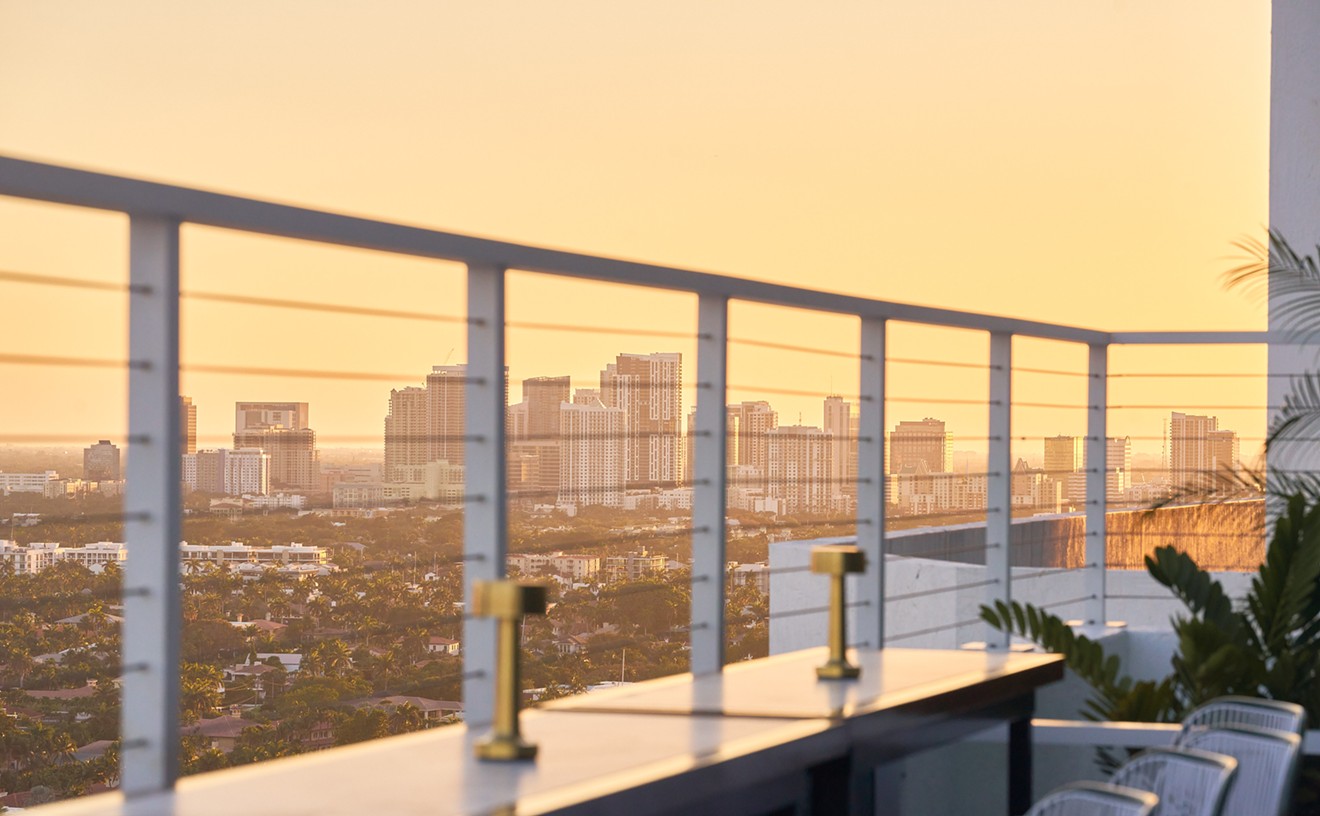It begins with inky slugs of homemade blood sausage. They're filled with pork blood, rice, onion, and smoky
Find it on the weekends at Doral's Mi Lindo Ecuador. The pale-yellow space on NW 25th Street is adorned with illustrations of the Virgin Mary and the Last Supper. Pictures of the menu's offerings cover an entire wall. Telemundo blares on a flat-screen TV set. The 34-seater is within earshot of the throaty rumble of tractor-trailers venturing into Miami International Airport. Three generations of the Castro family run the place, and you can find them taking orders, clearing tables, and rolling silverware into paper napkins while grabbing a quick bite between the lunch and dinner rush.
Encebollados are pitched as a hangover cure and an aphrodisiac in the same bowl.
tweet this
Gilberto Castro, age 68, is the patriarch. He began shuttling between the family's home in Guayaquil — Ecuador's largest city — and Miami in the late 1980s. He sold Avon products, clothes, and other wares to support the family back home. He and his wife Mercedes, now 65 and still the family cook, moved to a small home in Sweetwater in the mid-1990s. It wasn't long before they began selling food in nearby parks out of their home to earn extra money. In 2004, they opened the original Mi Lindo Ecuador just south of the airport on NW Seventh Street. That same year, Gilberto was joined by his son Octavio, now 42, who arrived with his young family. "I didn't have a steady job back in Ecuador," Octavio says. "I was more nervous staying there than coming here."
These days, the family does what it knows best: serve a broad swath of Ecuadorian cuisine that is as widely varied as the country that includes the Andes, the Amazon jungle, and Pacific beaches.
The massive menu is broken down by proteins — chicken, pork, fish, and shrimp. There are ceviches, traditional dishes like the tripe stew guatita, and samplers called triples y cuádruples. There are also seafood-studded casseroles thickened with mashed plantains.
The most common refrains are the soups, stews, and starch-heavy dishes that compose the bulk of the Ecuadorian diet. Alongside the weekend specials like that
Despite the sweltering heat, it's hard to resist dousing it onto a platter heaped with steaming yellow rice. The grains are boiled in the appropriate seafood stock, depending upon the order. The one with briny shreds of crab is tossed with the perfunctory onions, red pepper, queso crema, and a hefty dose of butter to create a kind of oceanic, starchy frosting. A pair of fried sweet plantains rides shotgun for good measure.
Other starch-centric dishes are good for any time of day.
Indeed, the vast majority of Mi Lindo's menu is a delightful change from the offerings at the
Mi Lindo Ecuador
8726 NW 26th St., Doral; 305-718-8577; milindoecuador.us. Tuesday 9 a.m. to 6 p.m., Wednesday and Thursday 9 a.m. to 7 p.m., Friday through Sunday 9 a.m. to 8 p.m.
- Bolones mixtos $6
- Empanadas de verde con queso $6
- Encebollado de pescado $11
- Caldo de salchicha $9
- Arroz con cangrejos $13.50











